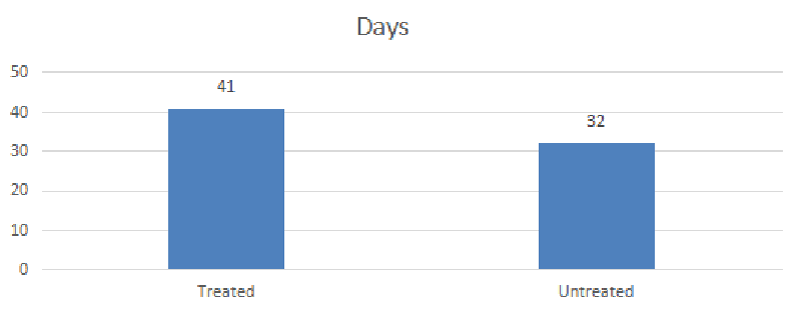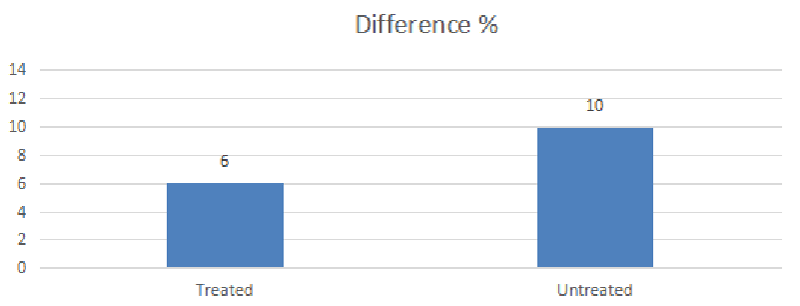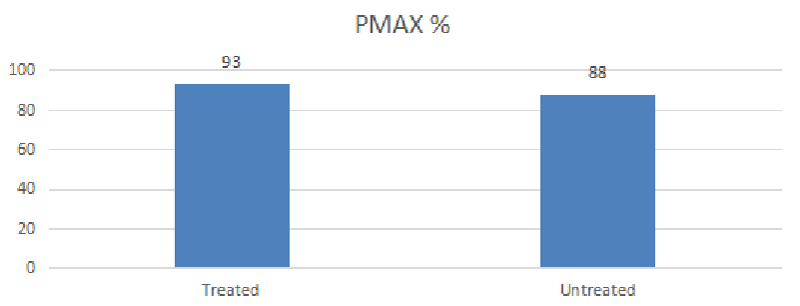Journal of Cardiovascular Medicine and Cardiology
Nutritional aspects in the sportsman’s functional rehabilitation program
Fondi A, D’Angelo A, Bartoletti A, Di Giacinto G and Ripari P*
Cite this as
Fondi A, D’Angelo A, Bartoletti A, Di Giacinto G, Ripari P (2023) Nutritional aspects in the sportsman’s functional rehabilitation program. J Cardiovasc Med Cardiol 10(2): 025-027. DOI: 10.17352/2455-2976.000196Copyright License
© 2023 Fondi A, et al. This is an open-access article distributed under the terms of the Creative Commons Attribution License, which permits unrestricted use, distribution, and reproduction in any medium, provided the original author and source are credited.The adoption of a proper dietary regimen is of vital importance in the sports practice of athletes, as it is able to ensure an adequate turn-over of all those substances that are consumed with exercise. Our purpose was to demonstrate how adequate protein intake can favorably influence the post-injury rehabilitation phase. Our work is presented as a case-control study on a group of 16 competitive athletes recovering from sports injuries who were prescribed a balanced diet with, to 8 of them, oral supplementation with a pool of amino acids in optimal composition in the dose of 1g/kg/day. In the two groups, recovery time, muscle strength, and injured limb diameter were taken as variables. It was observed that the group treated with amino acid supplementation had statistically significant benefits compared with the group treated with diet prescription alone.
Introduction
It is now a well-known fact that the adoption of a correct nutritional scheme by an athlete is of fundamental importance, certainly not because this could guarantee victory, but rather because it makes possible an optimal utilization of the substrates deputed to the function of fuel for the organism (carbohydrates and lipids), which are designated to plastic functions, such as proteins, or also to different but non-caloric functions such as vitamins, mineral salts, trace elements, and water. A well-formulated diet both quantitatively and qualitatively is able to ensure adequate turnover of all substances that, with exercise, especially intense ones, come to be consumed and/or destroyed (approximately 56). Thus, while miracles cannot be expected, on the other hand, a well-nourished athlete can avoid incurring deficiency states from overconsumption or deficient intake. A review of the literature reveals an obvious discrepancy between two different but, in fact, very similar situations. In fact, on the one hand, there is a great proliferation of works aimed at investigating the best ways to feed an athlete in the course of competitive activity, the same cannot be said about the nutritional prescriptions to be implemented in the post-injury rehabilitation phase. This, in our opinion, represents a shortcoming, as it is intuitive that even in the case of a rehabilitative program, nutritional support could favorably influence recovery time and modalities. Particular attention should be paid to protein intake, which is of fundamental importance in all situations in which it is necessary to increase muscle tone-trophism. In this regard, with the understanding that the protein fraction must be introduced through food sources, animal and non-animal, it seemed interesting to evaluate the effects of oral supplementation of a pool of amino acids in optimal composition, essential and non-essential, which previous investigations have revealed to bring a significant improvement at the expense of protein metabolism and muscle structure [1-6].
Materials and methods
The study was conducted on 16 subjects of both sexes, ages ranging from 22 to 38 years, practicing various sports disciplines at a competitive level, who were afferent to the U.O. of Sports Medicine and Cardiology University d’Annunzio Chieti-Pescara following the occurrence of sports injuries of equal magnitude, affecting the limbs, which required the implementation of a rehabilitation protocol articulated on:
- Hydrokinesitherapy;
- Proprioceptive exercises;
- Muscle strengthening.
As part of the program, 8 subjects were prescribed a balanced and standardized diet, and the other 8 were given oral supplementation through an optimal composition amino acid pool in the dose of 1g/10kg/day.
The following parameters were considered for each of the athletes:
- Times elapsed between injury and return to sports activity;
- Muscle diameter of the affected limb;
- Muscle strength (measured by Strain Gauge using a Hand Grip as an instrument). The results obtained in supplemented and non-supplemented athletes, respectively, were subjected to statistical comparison [7-11].
Results
The results are displayed in the following figures. Specifically, Figure 1 shows the comparison between the averages of recovery times measured in the two groups: it can be observed that a clear significance (p < 001) can be found in favor of the group of supplemented subjects; Figure 2 shows the comparison regarding the diameters of the affected limb: a significant difference (p < 005) is again observed in favor of the group of treated athletes; finally, Figure 3 shows the comparison between the dynamometric values measured in the two groups: once again, the values of the supplemented subjects are significantly higher than those of the untreated ones (p < 005).
Discussion
The study carried out allowed the authors to reiterate the importance of a proper nutritional regimen, both for the athlete in the midst of competitive activity and for the same during post-injury rehabilitation. In agreement with what has been reported by other authors, it seems clear that optimizing the intake of certain nutrients, such as, in particular, amino acids can allow the athlete to limit the intake of fats, even the hidden ones, favoring the preservation, if not the increase, of the lean component essential for the purposes of the complete recovery of muscle mass. In addition, the adoption of dietary rules and calculated supplementation, allows the athlete to adapt more adequately to training exercises, without imposing sacrifices on the athlete [12-17].
Conclusion
In the light of the results that emerged from the investigation, although considering the small number of cases evaluated, it seems clear that oral supplementation with a selected Pool of amino acids, in optimal composition and administered in proportion to body weight, induced favorable effects on all the parameters taken into consideration, and it, therefore, seems legitimate to propose such a nutritional intervention, in order to optimize the energy response within the rehabilitation pathway.
- Mc Ardle WD, Katch FI, Katch VL. Alimentazione nello Sport. Casa Editrice Ambrosiana, Milano. 2001.
- Coyle EF. Substrate utilization during exercise in active people. Am J Clin Nutr. 1995 Apr;61(4 Suppl):968S-979S. doi: 10.1093/ajcn/61.4.968S. PMID: 7900696.
- Evans WJ. Exercise and protein metabolism. World Rev Nutr Diet. 1993;71:21-33. doi: 10.1159/000422347. PMID: 8503224.
- Lemon PW. Is increased dietary protein necessary or beneficial for individuals with a physically active lifestyle? Nutr Rev. 1996 Apr;54(4 Pt 2):S169-75. doi: 10.1111/j.1753-4887.1996.tb03913.x. PMID: 8700446.
- Brooks GA, Butte NF, Rand WM, Flatt JP, Caballero B. Chronicle of the Institute of Medicine physical activity recommendation: how a physical activity recommendation came to be among dietary recommendations. Am J Clin Nutr. 2004 May;79(5):921S-930S. doi: 10.1093/ajcn/79.5.921S. PMID: 15113740.
- Heymsfield SB. The weight debate: balancing food composition and physical activity. Preface. Am J Clin Nutr. 2004 May;79(5):897S-898S. doi: 10.1093/ajcn/79.5.897S. PMID: 15113736.
- Spriet LL, Gibala MJ. Nutritional strategies to influence adaptations to training. J Sports Sci. 2004 Jan;22(1):127-41. doi: 10.1080/0264041031000140608. PMID: 14971438.
- Maughan RJ, King DS, Lea T. Dietary supplements. J Sports Sci. 2004 Jan;22(1):95-113. doi: 10.1080/0264041031000140581. PMID: 14971436. Review.
- Burke L. ACSM and MSSE: nutrition and metabolism perspective. Med Sci Sports Exerc. 2004 Feb;36(2):179. doi: 10.1249/01.MSS.0000113469.60836.BA. PMID: 14767236.
- Kreider RB, Kalman DS, Antonio J, Ziegenfuss TN, Wildman R, Collins R, Candow DG, Kleiner SM, Almada AL, Lopez HL. International Society of Sports Nutrition position stand: safety and efficacy of creatine supplementation in exercise, sport, and medicine. J Int Soc Sports Nutr. 2017 Jun 13;14:18. doi: 10.1186/s12970-017-0173-z. PMID: 28615996; PMCID: PMC5469049.
- Thomas DT, Erdman KA, Burke LM. American College of Sports Medicine Joint Position Statement. Nutrition and Athletic Performance. Med Sci Sports Exerc. 2016 Mar;48(3):543-68. doi: 10.1249/MSS.0000000000000852. Erratum in: Med Sci Sports Exerc. 2017 Jan;49(1):222. PMID: 26891166.
- Kerksick CM, Wilborn CD, Roberts MD, Smith-Ryan A, Kleiner SM, Jäger R, Collins R, Cooke M, Davis JN, Galvan E, Greenwood M, Lowery LM, Wildman R, Antonio J, Kreider RB. ISSN exercise & sports nutrition review update: research & recommendations. J Int Soc Sports Nutr. 2018 Aug 1;15(1):38. doi: 10.1186/s12970-018-0242-y. PMID: 30068354; PMCID: PMC6090881.
- Heaton LE, Davis JK, Rawson ES, Nuccio RP, Witard OC, Stein KW, Baar K, Carter JM, Baker LB. Selected In-Season Nutritional Strategies to Enhance Recovery for Team Sport Athletes: A Practical Overview. Sports Med. 2017 Nov;47(11):2201-2218. doi: 10.1007/s40279-017-0759-2. PMID: 28702900; PMCID: PMC5633631.
- Malsagova KA, Kopylov AT, Sinitsyna AA, Stepanov AA, Izotov AA, Butkova TV, Chingin K, Klyuchnikov MS, Kaysheva AL. Sports Nutrition: Diets, Selection Factors, Recommendations. Nutrients. 2021 Oct 25;13(11):3771. doi: 10.3390/nu13113771. PMID: 34836029; PMCID: PMC8619485.
- Markus I, Constantini K, Hoffman JR, Bartolomei S, Gepner Y. Exercise-induced muscle damage: mechanism, assessment and nutritional factors to accelerate recovery. Eur J Appl Physiol. 2021 Apr;121(4):969-992. doi: 10.1007/s00421-020-04566-4. Epub 2021 Jan 8. PMID: 33420603.
- An YH, Kim J, Kim HJ, Lim K. Effects of leucine-enriched essential amino acid supplementation on muscular fatigue and inflammatory cytokines in wheelchair basketball players. Phys Act Nutr. 2020 Jun 30;24(2):38-46. doi: 10.20463/pan.2020.0013. PMID: 32698260; PMCID: PMC7451841.
- Moro T, Ebert SM, Adams CM, Rasmussen BB. Amino Acid Sensing in Skeletal Muscle. Trends Endocrinol Metab. 2016 Nov;27(11):796-806. doi: 10.1016/j.tem.2016.06.010. Epub 2016 Jul 19. PMID: 27444066; PMCID: PMC5075248.

Article Alerts
Subscribe to our articles alerts and stay tuned.
 This work is licensed under a Creative Commons Attribution 4.0 International License.
This work is licensed under a Creative Commons Attribution 4.0 International License.




 Save to Mendeley
Save to Mendeley
